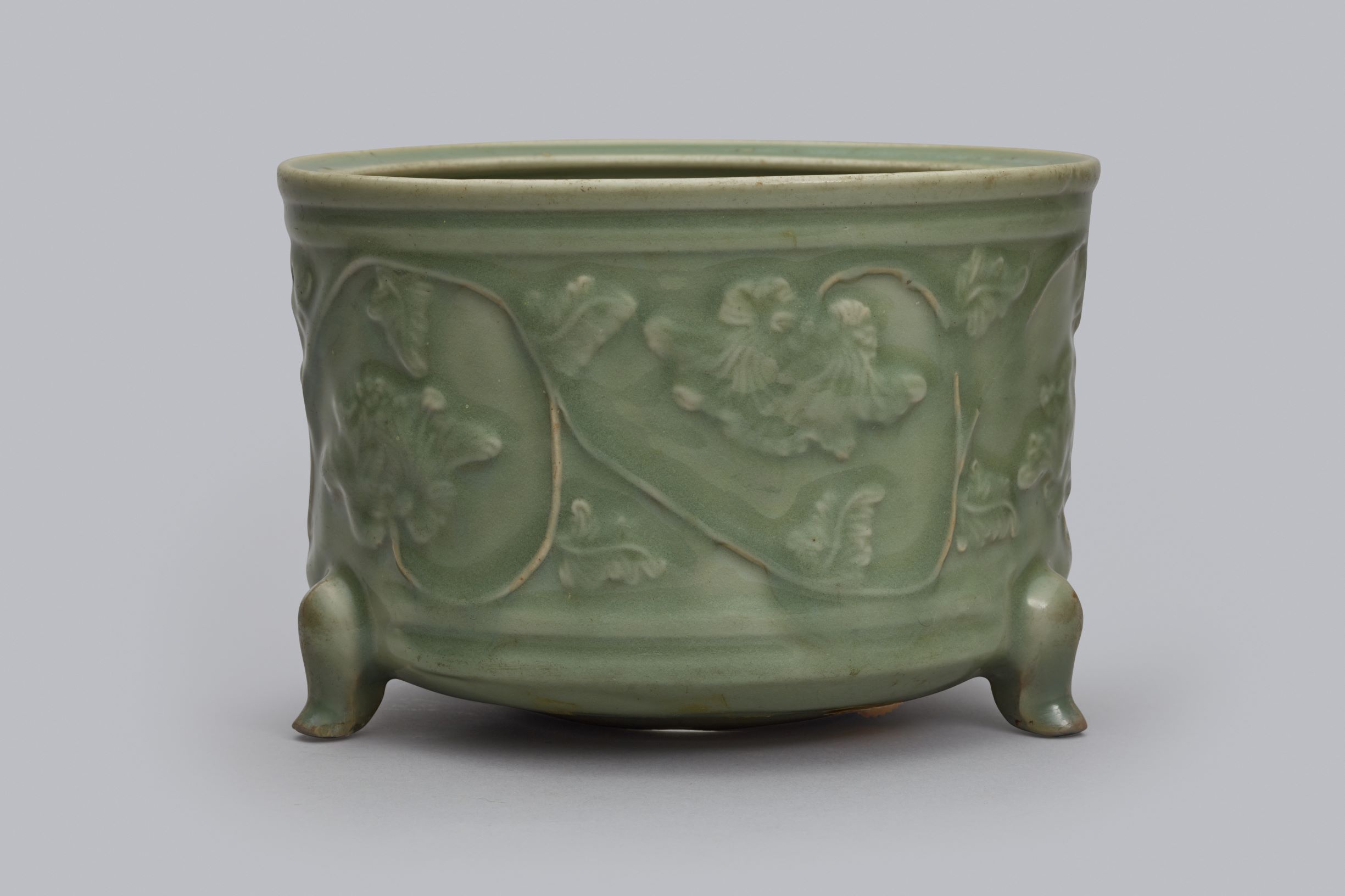
Cylindrical Jardiniere or Bulb Bowl [Ch9]
Longquan, South Zhejiang Province; Yuan Dynasty, 13th century
Porcelain with moulded decoration under a green glaze (D. 23 cm) (with fitted wooden box)
The bowl is of cylindrical, slightly tapering form on three short cabriole legs and pad feet, the base has a circular draining hole. The body is moulded on the exterior with a continuous design of six peony flowers connected by scrolling leafy tendrils within moulded borders above and below.
The bright celadon glaze now attributed to the Yuan dynasty is called tenruji in Japan. Major Duberly writes: “Tenruji is derived from an incense burner preserved in a temple of that name in Kyoto”, but there was also an alternative theory that it was the ships of that name which transported these wares to Japan in the Ming period.
Literature: Anthony du Boulay, The Duberly Collection of Chinese Art at Winchester College (Winchester, 2019), p. 16; G.St.G.M. Gompertz, Chinese Celadon Wares (London, 1958), fig. 88; R.L. Hobson, Chinese Ceramics in Private Collections (London, 1931), fig. 330
Exhibited: Burlington House, London, International Exhibition of Chinese Art, 1935-1936, no. 1360
Provenance: Bequeathed as part of the Duberly Collection, 1978; purchased by Major Montagu and Lady Eileen Duberly from John Sparkes, 3 August 1960 (£525); formerly in the collection of Charles E. Russell, Sotheby’s, 12 July 1960, lot 141
Location: Treasury, Gallery 2